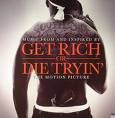"TO ACHIEVE satisfactory investment results is easier than most people realise; to achieve superior results is harder than it looks." - these were the wise words of Benjamin Graham, the father of two fundamental investment disciplines - security analysis and value investing.
Not a name unheard of in the investing world, Benjamin Graham was an icon for many, including William J. Ruane and Irving Kahn. One of his most loyal and notable disciples, however, was Warren Buffet.
There is no better way to learn how to make it big in the investing world than learning it from the best and it doesn't get any better than Benjamin Graham.
Benjamin Graham was born in the UK in 1894 and moved to US when he was eight and a half years old. Although he came from a poor family, he was exceptionally bright at a young age. He graduated from Columbia University in 1914 and started his investment career by joining Wall Street as a financial analyst.
He established his first private investment organisation, the Benjamin Graham Joint Account, at the age of thirty two. During the Great Depression, between 1929 and 1932, he lost 70 per cent of his US$2.5 million (RM9.05 million) fund. Although some of his clients gave up, his fund managed to survive the worst, and by 1935, he recovered all the losses.
What did Graham consider as critical elements to successful investing? Here, we will briefly note the investing principles propoun-ded by Benjamin Graham.
* Understand the difference between investment and speculation.
Graham established a clear distinction between an investment and a speculation. To qualify as an investment, it must go through analysis, must have a good margin of safety and a satisfactory return. Speculation, on the reverse, merely involves timing and profiting from market fluctuation.
* Do a detailed analysis as stocks represent a share of business.
In the process of doing a detailed analysis, investors need to have the mindset of treating stock purchasing as if they own a piece of the business to evaluate stock prices from the perspective of the underlying asset value, financial strength and future earning prospect, instead of focusing on the short-term fluctuation of the market. This is regarded as the intrinsic value of the company.
* Build Margin of Safety.
Graham's most famous and influential motto is 'margin of safety'. The experiences that he cumulated during the frenzy of the Great Depression made a deep impression on him. He became a very cautious investor whose number one investment concern is the safety of investment principal.
If the intrinsic value of a stock is RM1 and you buy the stock at the price of 67 sen, then your margin of safety is 33 per cent. This serves as a cushion to your investment in the case of a market downturn or to provide you with a margin of error in calculating the intrinsic value, so that the chances of you losing your principal are at the lowest.
* Have a realistic return objective.
The objective of making an investment is to make money. However, Graham warns against aiming for unrealistic return objective. If you expect an abnormally high return from your investment, chances are you will be exposing yourself to unnecessary risk in order to achieve your return objective, which will become speculation instead of investment.
There is no short cut or quick ways to making money. Graham's way of investing is to set a realistic return objective and making investments based on sound investment principles and having the discipline to follow through.
* Treat the market as servant, not master.
Graham believes that risks and returns do not increase proportionately. He sees the opportunities in market volatilities. To him, the stock market is manic-depressive and investors should go for a bargain hunt during a market down turn.
The risk of investment can be significantly reduced if investors understand the business and apply good judgment based on the above first three elements in searching for good fundamental stocks, which are temporarily depressed due to market reasons.
However, he discourages making decisions based on any form of forecast and timing of the market. Instead, the decision making should be made based on price attractiveness.
Graham's stock selection criteria include a price-to-book ratio of 1.5 times, price-to-earnings ratio of below 20 times and debt-to-equity ratio of 0.5 times.
From the above, you can observe that Graham advocates defensive investing approaches. This later became the foundation of the investing principles of the famous investing guru, Warren Buffet, who learned about the quantitative screening process from Graham while working in Graham's company.
However, for a lay person to successfully apply Graham's approaches, you need to be prepared to overcome some hurdles. You need to do a lot of hard work and have good accounting knowledge in order to dissect the financial information provided in the annual report or other financial publications.
In addition to that, you will have to be highly sensitive to any news that will affect the performance of the company or the relevant industries. Having the ability to derive your own conclusion from your research, you will also then need to have the determination and faith in your work so as to prevent yourself from being blown away by the market
-




No comments:
Post a Comment